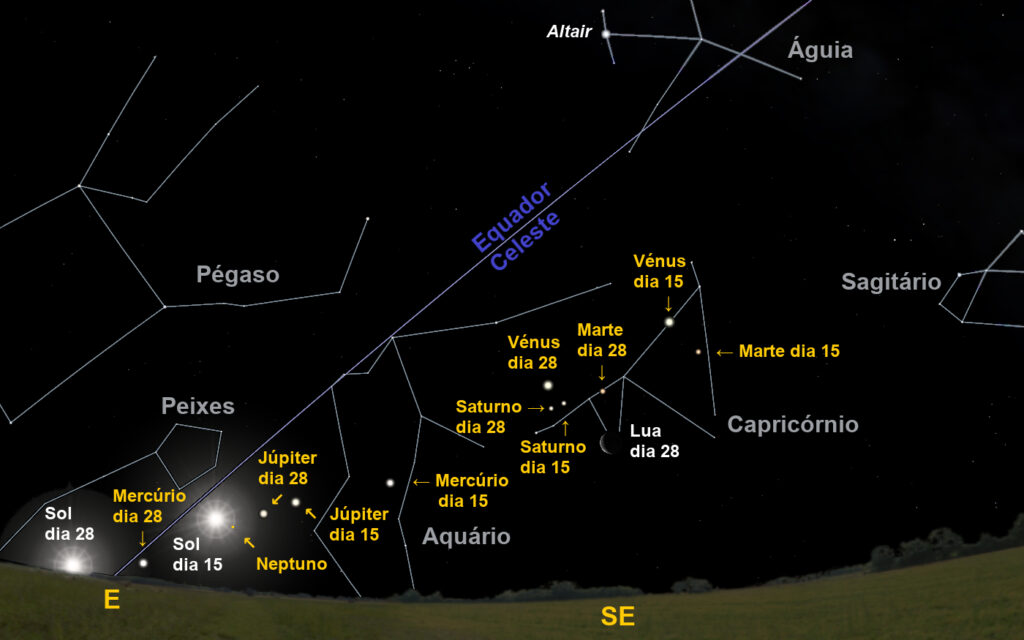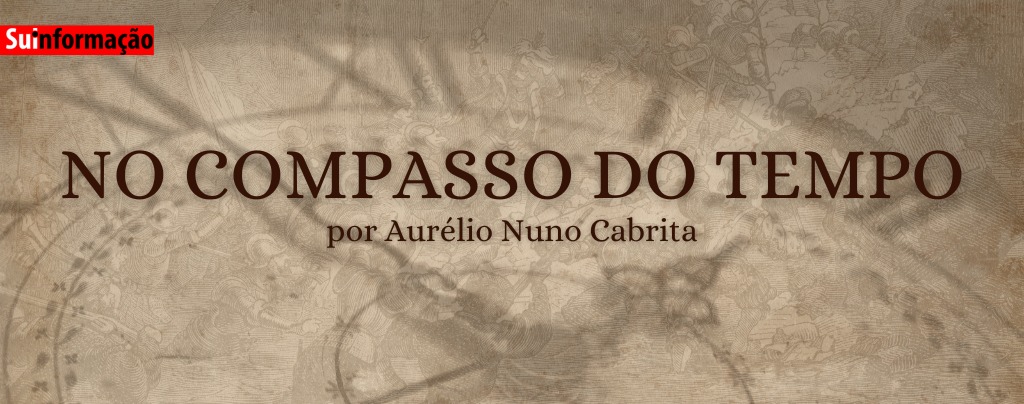This year, Ash Wednesday coincides with the New Moon. Such a lunar phase occurs when the Moon is in the direction of the Sun, being overshadowed by it. Also for these days, the planets Jupiter and Neptune are in directions very close to the solar, only being observable (with binoculars in the case of Neptune) closer to the end of the month.
Also on this same day, the 2nd, the conjunction (closest approximation) between the planets Mercury and Saturn occurs. But, while Saturn will be visible at the end of the day during the whole month, Mercury will quickly approach the direction of the Sun, leaving it out of sight in mid-March.
On the night of the 8th, the Moon will appear next to the star cluster of the Pleiades (also called the Seven-Star). For anyone with any imagination, this set of stars that formed together looks like an examination of flies flying over the back of the constellation Taurus. Two days later, that is, at the time of the crescent moon on the 10th, the Moon will have already moved to the tip of the horns of this same constellation.
In turn, the last Full Moon of this winter will take place on the 18th, next to the constellation Virgo, while our natural satellite will only reach the waning fourth phase at dawn on the 25th, being already well in the middle of the constellation of Sagittarius.

But, before these two ephemeris, on the 16th, we will have the conjunction of the planets Venus and Mars and, after them, we will have a new planetary conjunction at dawn on the 29th, this time involving Venus and Saturn.
It should be noted that, on these days, Venus is in a direction quite far from the Sun, reaching its greatest elongation (distance) to the west, on the morning of the 20th.
As the Earth moves around the Sun, it appears to us projected against different regions of the celestial sphere. So, since the beginning of the year, the Sun has seemed to move further and further north. Thus, at 15:33 on the 20th, the Sun will appear projected above the celestial equator, as a result of being above the terrestrial equator.
Such an alignment will also imply that the northern and southern terrestrial hemispheres will be equally illuminated, hence the name of this ephemeris: equinox. From this moment on, our hemisphere will be the one that is most illuminated, thus giving rise to Spring.
Another of the consequences of the Sun “moving” further and further north is that, little by little, it rises earlier. A simple way to take advantage of these extra minutes of sun exposure is to get up earlier and earlier.
To do so, either we set the alarm clock forward or we advance the time: the latter is the principle behind the change to daylight saving time. In Portugal, this time change takes place at 1 am (continental time) on the last Sunday in March. 2022, this will occur on the 27th.
The last activity of this month will be to see how, between the dawn of the 28th and 30th, the Moon will have moved from the constellation of Capricorn (where we will find the planets Venus, Mars and Saturn) to Jupiter.
Good remarks!





















Comments